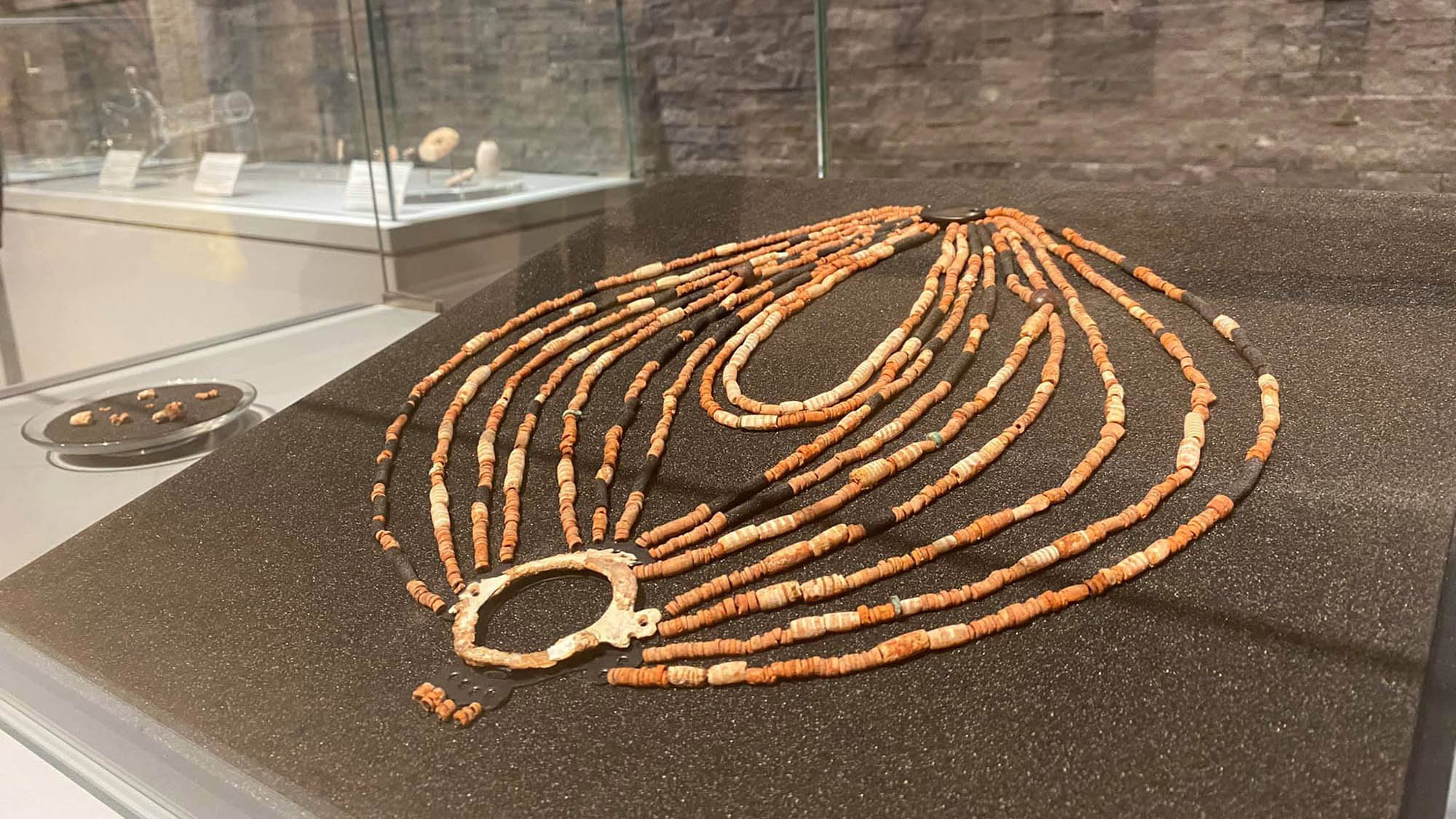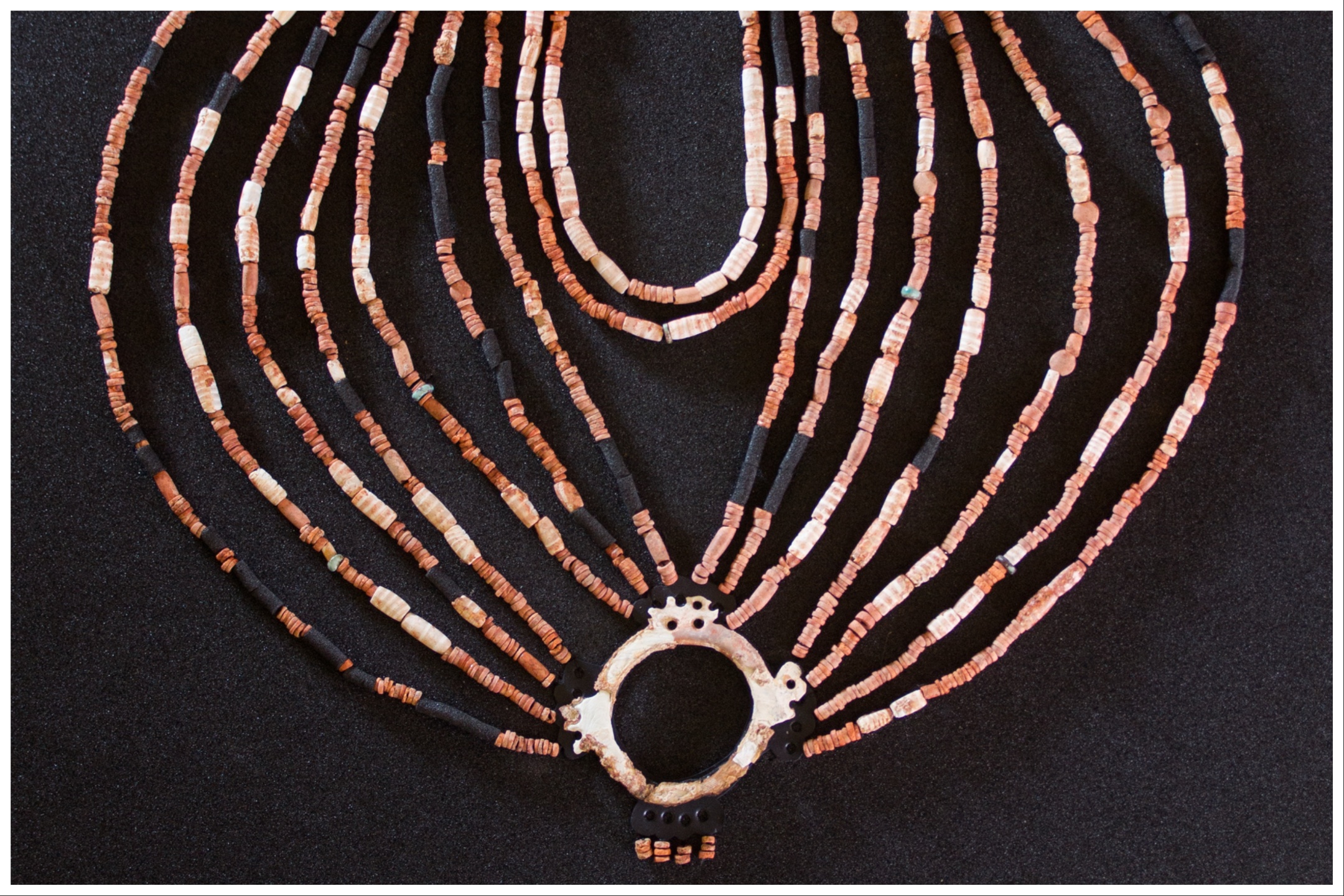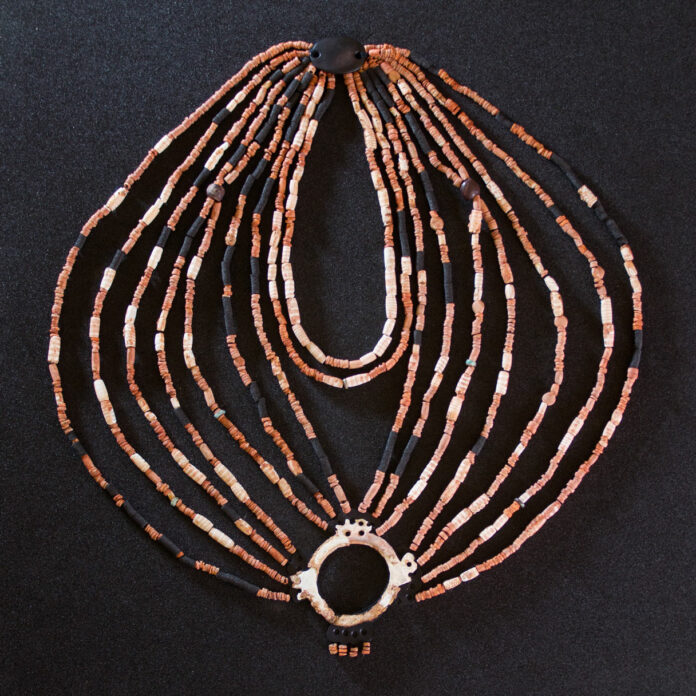Archaeologists have unearthed a remarkable find in what is now Jordan: the body of a child buried with thousands of beads, dating back around 9,000 years. This discovery offers a fascinating glimpse into the burial practices and cultural significance of the Neolithic village of Ba`ja. The intricate necklace reconstructed from this ancient child’s grave sheds light on the society’s reverence for their young and their sophisticated craftsmanship.
The Discovery
An international team led by archaeologist Hala Alarashi from Côte d’Azur University in France identified the remains as likely belonging to an 8-year-old girl. The bones, heavily damaged by time, reveal little about the child’s lifestyle, but the thousands of beads buried with her provide significant insights.
The Beads
The grave contained over 2,500 beads made of calcite, turquoise, and hematite, most stained red and scattered across the child’s chest and neck. Amid the chaos, researchers noticed a discernible pattern: for every ten disc-shaped beads, two tube-shaped beads were nearby. This arrangement suggests the beads were once strung together, possibly sewn into clothing or hung on the body.
The Necklace Reconstruction

Behind the child’s neck, Alarashi and her team discovered a mother-of-pearl ring and a double-perforated pendant with several beads still connected. Using these clues, scientists meticulously reconstructed the multi-stranded pendant, revealing an elaborate ornament that once adorned the child.
The Ancient Village of Ba`ja
Ba`ja, occupied between 7400 and 6600 BCE, is a small yet archaeologically rich village. Accessible only through winding gorges and vertical rock formations, it holds a wealth of historical treasures. Despite its isolation, not all inhabitants were buried here. The few graves found, mainly under houses, contained infants and children with numerous grave goods. In 2018, archaeologists discovered the 8-year-old girl’s grave beneath a room in this ancient village.
Cultural Significance

The researchers concluded that the beads were part of an ornament that disintegrated over time as the body decomposed. This necklace is unlike any other found in the Levant, a historical region spanning the Eastern Mediterranean to West Asia. The harmony of the colors and the careful symmetry of the beads indicate great wealth and prosperity. The true masterpiece is the mother-of-pearl ring, intricately engraved with delicate patterns resembling lace or filigree, showcasing the community’s aesthetic sensibility.
A Testament to Neolithic Craftsmanship
The sheer number of beads, their complex arrangement, and their beauty are reminiscent of later ornaments found in Mesopotamia and Egypt. Yet, in this much older Levant village, the necklace stands out. The archaeologists’ in-depth analysis allowed them to reimagine one of the oldest and most impressive Neolithic ornaments, likely created for a highly distinguished child within the community.
Conclusion
The reconstructed necklace, now on display at the New Museum of Petra in Jordan, serves as a significant testament to the cultural practices of the time. It was not created for trade but as a part of the child’s burial, reflecting the community’s reverence for their young and their sophisticated craftsmanship. This spectacular find offers invaluable insights into the Neolithic period and the people of Ba`ja, highlighting their complex social structures and cultural values.
